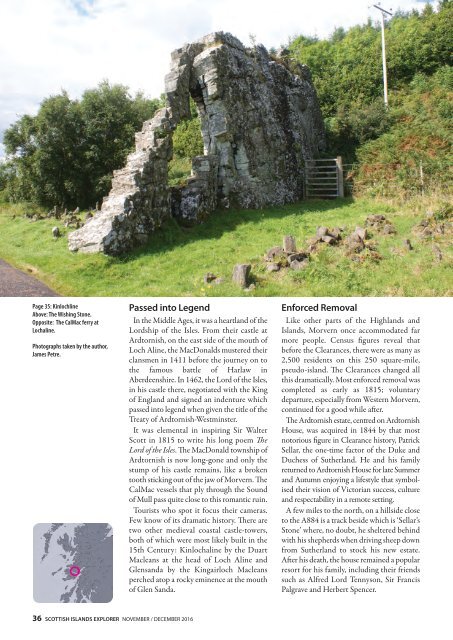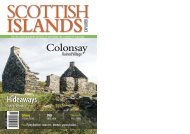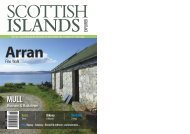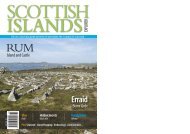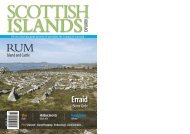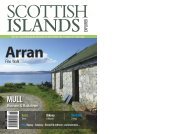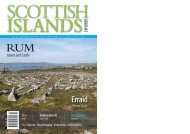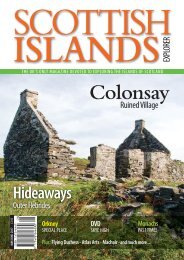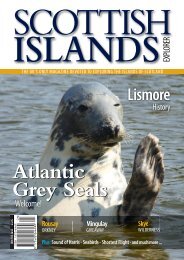Create successful ePaper yourself
Turn your PDF publications into a flip-book with our unique Google optimized e-Paper software.
Page 35: Kinlochline<br />
Above: The Wishing Stone.<br />
Opposite: The CalMac ferry at<br />
Lochaline.<br />
Photographs taken by the author,<br />
James Petre.<br />
Passed into Legend<br />
In the Middle Ages, it was a heartland of the<br />
Lordship of the Isles. From their castle at<br />
Ardtornish, on the east side of the mouth of<br />
Loch Aline, the MacDonalds mustered their<br />
clansmen in 1411 before the journey on to<br />
the famous battle of Harlaw in<br />
Aberdeenshire. In 1462, the Lord of the Isles,<br />
in his castle there, negotiated with the King<br />
of England and signed an indenture which<br />
passed into legend when given the title of the<br />
Treaty of Ardtornish-Westminster.<br />
It was elemental in inspiring Sir Walter<br />
Scott in 1815 to write his long poem e<br />
Lord of the Isles. e MacDonald township of<br />
Ardtornish is now long-gone and only the<br />
stump of his castle remains, like a broken<br />
tooth sticking out of the jaw of Morvern. e<br />
CalMac vessels that ply through the Sound<br />
of Mull pass quite close to this romantic ruin.<br />
Tourists who spot it focus their cameras.<br />
Few know of its dramatic history. ere are<br />
two other medieval coastal castle-towers,<br />
both of which were most likely built in the<br />
15th Century: Kinlochaline by the Duart<br />
Macleans at the head of Loch Aline and<br />
Glensanda by the Kingairloch Macleans<br />
perched atop a rocky eminence at the mouth<br />
of Glen Sanda.<br />
Enforced Removal<br />
Like other parts of the Highlands and<br />
<strong>Islands</strong>, Morvern once accommodated far<br />
more people. Census figures reveal that<br />
before the Clearances, there were as many as<br />
2,500 residents on this 250 square-mile,<br />
pseudo-island. e Clearances changed all<br />
this dramatically. Most enforced removal was<br />
completed as early as 1815; voluntary<br />
departure, especially from Western Morvern,<br />
continued for a good while aer.<br />
e Ardtornish estate, centred on Ardtornish<br />
House, was acquired in 1844 by that most<br />
notorious figure in Clearance history, Patrick<br />
Sellar, the one-time factor of the Duke and<br />
Duchess of Sutherland. He and his family<br />
returned to Ardtornish House for late Summer<br />
and Autumn enjoying a lifestyle that symbolised<br />
their vision of Victorian success, culture<br />
and respectability in a remote setting.<br />
A few miles to the north, on a hillside close<br />
to the A884 is a track beside which is ‘Sellar’s<br />
Stone’ where, no doubt, he sheltered behind<br />
with his shepherds when driving sheep down<br />
from Sutherland to stock his new estate.<br />
Aer his death, the house remained a popular<br />
resort for his family, including their friends<br />
such as Alfred Lord Tennyson, Sir Francis<br />
Palgrave and Herbert Spencer.<br />
36 SCOTTISH ISLANDS EXPLORER NOVEMBER / DECEMBER <strong>2016</strong>


